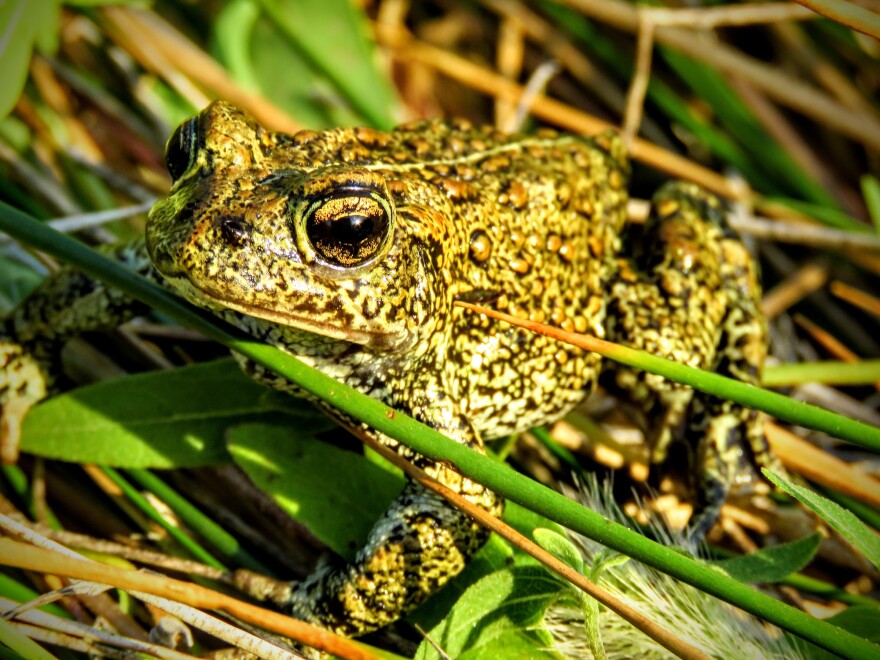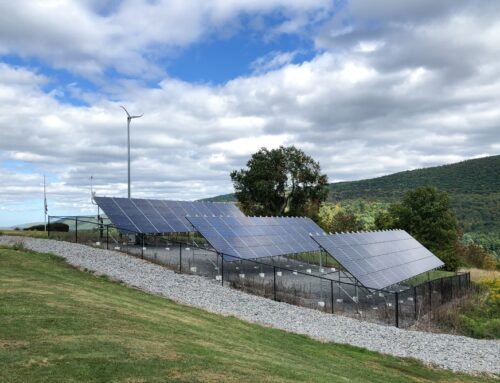Mountain West states are leading the charge to boost geothermal energy in the U.S.
December 31, 2024
The rhythmic hum of spinning turbines is constant at Ormat Technologies’ geothermal power plant in south Reno, a rolling sagebrush landscape dotted with wild horses.
The facility looks like a giant Lego set only a heroic parent could complete: A muscular network of pipes, tanks, wells, and turbines.
It generates electricity 24 hours a day, thanks to the limitless heat beneath our feet, says Ormat’s Marisol Collons, adding,“We’re looking for temperatures, on average between 270 and 325 [Farenheit].”
Here’s how geothermal energy works. Hot water is extracted from deep underground – below groundwater – through a high-pressure well. When the water hits the surface, the pressure drops, and the water turns to steam, which fills and heats the pipes.

Kaleb Roedel
/
Mountain West News Bureau
“That is what’s actually spinning that turbine to generate that power out for the electricity,” Collons said.
Ormat’s Steamboat Hills complex, which consists of six power plants, generates about 100 megawatts, which is enough to power about 80,000 homes.
In all, Nevada produces more than 800 megawatts of geothermal at any given time – second in the nation behind California – which makes up nearly 10% of Nevada’s electricity.
But those numbers could be much higher, said Jim Faulds, associate director of the Nevada Bureau of Mines and Geology and the state geologist.
“The region that we live in is one of the largest geothermal provinces on Earth,” Faulds said. “And one of the reasons for that is that the crust is extending.”
So much so that Nevada is growing by 2 acres every year.
“As the crust thins,” he continued, “it brings warmer parts of the earth, like the mantle, up closer to the surface.”
And renewable energy developers are racing to harness that heat.
This year, the Nevada Division of Minerals has been slammed with permit applications for geothermal exploration, said Dustin Holcomb, the agency’s fluid minerals manager.
“We’ve had the busiest year in application submittals in over a decade, so geothermal is ramping back up,” Holcomb said.
So is the revenue the state brings in from geothermal. Last year, Nevada collected $14.3 million in geothermal leases and royalties, which is nearly $6 million more than two years prior, Holcomb said.
And Nevada is not the only hotspot for this energy source. In Idaho, the nation’s largest geothermal heating system warms buildings in downtown Boise. There’s also a large-scale geothermal plant in southern New Mexico. And Colorado is offering grants and tax credits to support the development and use of geothermal in the state.

U.S. Department of Energy
Then there’s Utah, where the U.S. Department of Energy (DOE) is pouring millions of dollars into researching enhanced geothermal systems (EGS). This uses fracking techniques – similar to those used in oil and gas drilling – to inject water into the cracks of hot rock to create artificial reservoirs.
“Next-generation geothermal, which is now on the cusp of a real, credible explosion of opportunity, that is something that can bring the technologies nationwide,” said Lauren Boyd, who leads the DOE’s geothermal technologies office.
The federal agency is testing this technology at a project called FORGE in southwest Utah. Not far away, Fervo Energy is building the world’s largest enhanced geothermal plant.
Boyd said the DOE’s goal is for geothermal to provide 10% of the nation’s electricity by 2050. Right now, it accounts for less than 0.5%.
“It’s just so exciting, the opportunity to help provide this desperately needed clean, firm power as we are racing towards decarbonization,” Boyd said.
But not everyone is excited.
Take Patrick Donnelly. He’s the Great Basin director of the Center for Biological Diversity. In recent years, the conservation group fought to stop an Ormat project the federal government decided would likely impact an endangered toad’s habitat.
Last May, the U.S. Fish and Wildlife Service proposed to designate 930 acres of protected critical habitat for the Dixie Valley toad, which lives in just one hot spring-fed wetland in Churchill County.
“Geothermal power plants dry up hot springs or change their flow significantly,” Donnelly said. “And so, we have this path of destruction all across the state.”

Patrick Donnelly
/
Center for Biological Diversity/
Back at Ormat in Reno, officials said their geothermal plants aren’t drying up hot springs across Nevada. The company recycles the water it uses by reinjecting it back into the reservoir, said Kayla Dowty, the company’s director of business development.
She also pointed out that their plants only use a fraction of the land taken up by other renewable energy projects – like wind and solar – and geothermal doesn’t rely on the weather.
Dowty added: “So if the sun’s not shining and the wind’s not blowing, geothermal is still here.”
She said that’s important as the nation moves toward a renewable energy grid since people rely on electricity all day, every day.
As a note of disclosure, Ormat is a financial supporter of KUNR.
This story was produced by the Mountain West News Bureau, a collaboration between Wyoming Public Media, Nevada Public Radio, Boise State Public Radio in Idaho, KUNR in Nevada, KUNC in Colorado and KANW in New Mexico, with support from affiliate stations across the region. Funding for the Mountain West News Bureau is provided in part by the Corporation for Public Broadcasting.
Search
RECENT PRESS RELEASES
Related Post


